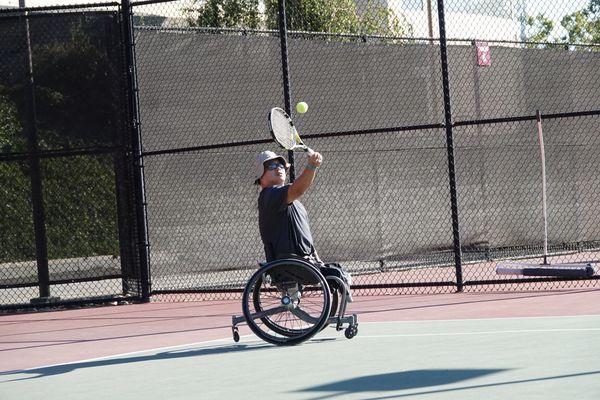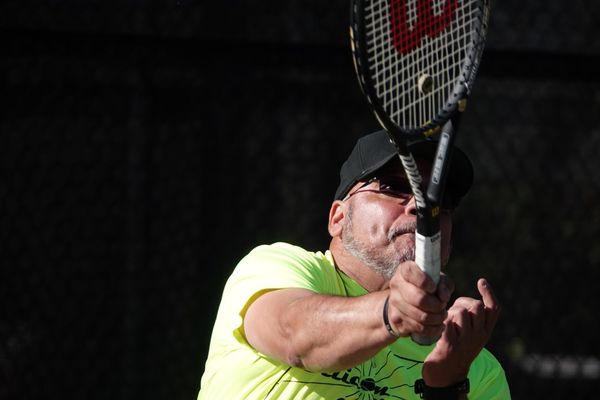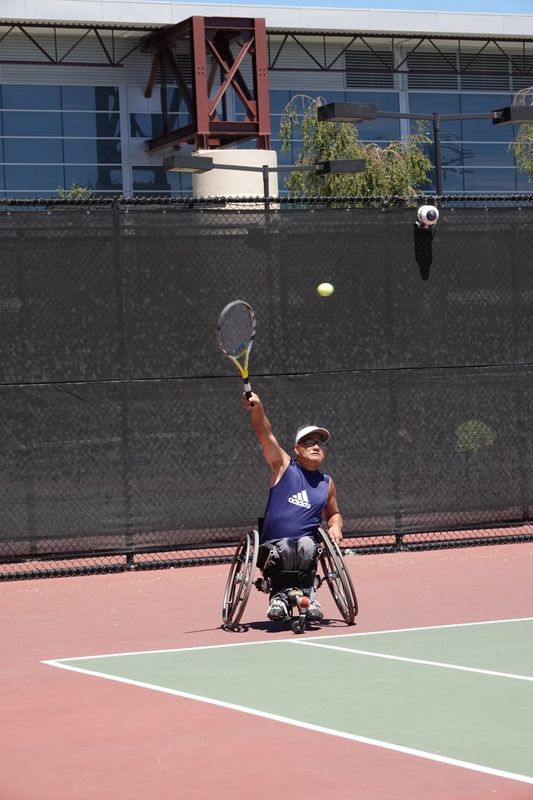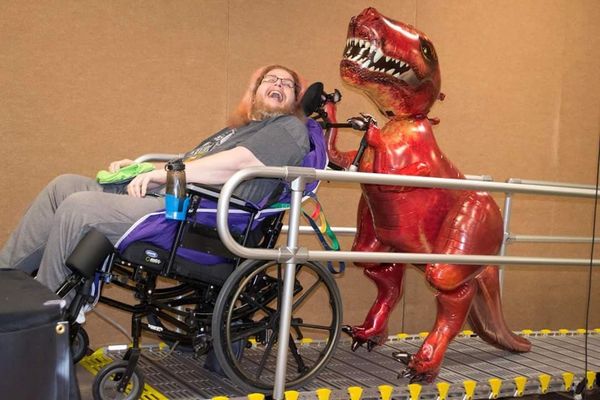Handicapped Pose
Aug 4, 2019 15:15:44 #
Through out my photographic career I known about several excepted poses for poeple. Few would covers handicapped people.
Does anyone have an opinion about a method of posing people in wheelchairs, walkers, or crutches, etc.
Does anyone have an opinion about a method of posing people in wheelchairs, walkers, or crutches, etc.
Aug 4, 2019 15:55:30 #
I think that disabled people - actually come to terms with their disability and their aids, so trying to 'shy away' from their walkers, wheel chairs etc puts up an unnecessary boundary. I would look at the positive things that they like doing.....be it sport, gardening, etc and photograph them 'doing' rather than emphasizing what they cannot.
With people you automatically alter settings when photographing ethnic differences in skin tones without worrying....Same should apply with disabled people. Get them comfortable, discuss what their interests are and how they would prefer to be portrayed.
Have fun
With people you automatically alter settings when photographing ethnic differences in skin tones without worrying....Same should apply with disabled people. Get them comfortable, discuss what their interests are and how they would prefer to be portrayed.
Have fun
Aug 4, 2019 16:05:26 #
GENorkus wrote:
Through out my photographic career I known about several excepted poses for people. Few would covers handicapped people.
Does anyone have an opinion about a method of posing people in wheelchairs, walkers, or crutches, etc.
Does anyone have an opinion about a method of posing people in wheelchairs, walkers, or crutches, etc.
Excellent question!
When you mentioned "pose" I assume you are talking about portraits, possibly formal or traditional portraits.
In my practice of professional portraiture, I always, whenever possible, hold a pre-session consultation prior to the date of the shoot. My main goal in this concept is to find out what the client expects, and how they want to be photographed, memorialized or represented in a portrait-what statement they want the portrait to make about them, etc. We also discuss preparation, clothing, colors aesthetics and preparations.
I have photographed many folks with handicaps. I can't speak individually for every one of them or generalize but the consensus I detected among most of these clients is that they want to be shown a person- a personality, that happens to be handicapped and not a "handicapped person"! Sounds strange- too much semantics? I get it though! Some don't mind including mobility devices in their image while others don't want their appliances to dominate the image. The majority opt of a traditional head and shoulder image. Those who have decorative canes with interesting carvings- want them in the shot. Some have indicated that their crutches, walkers, scooters, etc. just get them to the studio and their workplaces- the world no sooner bring their car into the studio unless it was an exotic model! I have photographed disabled veterans in dress uniform with all their decorations but none of them wanted me to include their wheelchairs. One fellow wanted a very "happy" shot with every detail of his high-tech scooter! He said it was the "Maserati GranTurismo" of scooters!
I will do whatever the clients want in theses situation. This has been my experience. People like frank discussions and when they know you are sensitive and caring- on their side, and want to do the best possible work for them, they will relax and make your job easier.
Aug 4, 2019 16:16:00 #
E.L.. Shapiro wrote:
Excellent question! br br When you mentioned &qu... (show quote)
While at a velodrome I came across an Army veteran wearing shorts. He had a really nice artificial leg, completely decorated as an American flag and was very proud of it.
No problems with that so I know what you're talking about.
Aug 4, 2019 17:21:17 #
I have shot a few paraplegic folks when I was active.
Listening to them is the key, nothing else will work.
Listening to them is the key, nothing else will work.
Aug 5, 2019 06:45:39 #
When we learn to accept our condition and make the most of it , we are no longer handicapped but are empowered and the negative stuff doesn't stick. If your subject is cool with it....your job is a lot easier and you can focus on the positive attributes of their portrait and the viewing eye will sense this immediately because the camera doesn't know the difference and only records what is placed in front of it.
Aug 5, 2019 06:53:11 #
GENorkus wrote:
Through out my photographic career I known about several excepted poses for poeple. Few would covers handicapped people.
Does anyone have an opinion about a method of posing people in wheelchairs, walkers, or crutches, etc.
Does anyone have an opinion about a method of posing people in wheelchairs, walkers, or crutches, etc.
My only recommendation is to tell a story in your image of strength and tenaciousness to accept no boundary of limitation.
Aug 5, 2019 08:51:38 #
E.L.. Shapiro wrote:
Excellent question! br br When you mentioned &qu... (show quote)
So, That's why you're successful! With my best respect, the fine art of listening to your subject delivers the best work. And who(m) is the portrait for? No matter who pays or the intended use, for regular subjects, a person's portrait is unquestionably about and subsequently for them. Even with professional models and commercial shoots, it never serves anyone to create anything but the best likeness of a human. (Sure there are exceptions).
Having done photographs of disabled people at an Adapted Ski School, the main rule is to get to their eye level. A smile and genuine caring and acceptance go a long way. Make sure you show the person not the situation.
Aug 5, 2019 11:04:46 #
Just photographed a Wheelchair tennis tournament and the participants were very excited to see images of themselves in the “heat of battle” I know it is no portraiture, but here are a couple of shots taken with a RX10M4.



Aug 5, 2019 11:34:25 #
Ignore the image quality as this is from my phone. But people are people. Find out what they are into and incorporate their hobbies or interests.
Aug 5, 2019 11:40:51 #
Aug 5, 2019 12:02:16 #
Dug E Pi wrote:
Ignore the image quality as this is from my phone. But people are people. Find out what they are into and incorporate their hobbies or interests.

Love the T-rex.
Aug 5, 2019 15:34:57 #
Most of the images and discussion here seems to think disability means physical disabilities, some of which are very easy to exclude or include as you wish, I have been in a position where I have had the opportunity to photograph children with special needs, both physical and mental disabilities, various syndromes, genetic disorders etc. but the image in many instances can magnify the disability and make it far more obvious than it would normal be. I would like the opportunity to discuss the image with the client but this is not always possible, instead talking to carers or parents and we can't always give them what they want. When I go to photography shows and exhibitions I am always looking for direction but rarely is it there, it is not the same as photographing kids without disability and I guess the same applies to adults. sometimes the person is hidden behind the disability and it is very difficult to get to just the person
Aug 5, 2019 19:15:44 #
GENorkus wrote:
Through out my photographic career I known about several excepted poses for poeple. Few would covers handicapped people.
Does anyone have an opinion about a method of posing people in wheelchairs, walkers, or crutches, etc.
Does anyone have an opinion about a method of posing people in wheelchairs, walkers, or crutches, etc.
Celebrate the aid unless specifically requested to not do so.
Aug 6, 2019 01:50:46 #
Architect1776 wrote:
Celebrate the aid unless specifically requested to not do so.



If you want to reply, then register here. Registration is free and your account is created instantly, so you can post right away.








